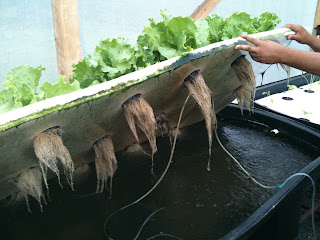Have added a new grow bed into the aquaponic system & thought it might help others to see how i like to set them up. am, using rock this time so thought it w.... Gravel: 2.5 lbs. of gravel for every 5 gallons of water grow bed: must sit on top of fish tank and be 3” – 8” deep growing medium: enough pea gravel, perlite, coconut coir, expanded clay pebbles or peat moss to fill the grow bed ph test kit and, depending on the ph of your water, ph down or ph up ($10- $50) plants; scissors. Gravel for aquaponics. when choosing gravel for an aquaponics system, make sure that the gravel is safe to use with fish. consider the size of the gravel, if it is too small, fish can ingest it, mistaking it for food. pea gravel comes in varying sizes and is a popular choice for fish tanks. always rinse gravel thoroughly before placing into tanks..
A lot of the care you put into your aquaponics system revolves around the fish tank, but a good grow bed is just as important for cultivating reliable crops. there are a number of options available to you for your aquaponic grow bed. there are costs and benefits to each, and one may be better for your set-up than another, so learn as much as you can about these options before you make a choice. The team developed deep water hydroponic grow beds within a large-scale aquaponic system by 1997. after a successful experiment in 1978, william m. lewis and his colleagues concluded that combination of aquaculture, biofiltration and plant fertilization yielded excellent results in tomato growing ( source ).. Aquaponic grow beds . your grow bed can be considered as the centre of the aquaponics system as it performs many important tasks. most importantly it acts as a bio-filter, collecting and processing the ammonia and solid waste from the fish. after which it returns clean ‘detoxed’ water back to the fish..





0 komentar:
Posting Komentar